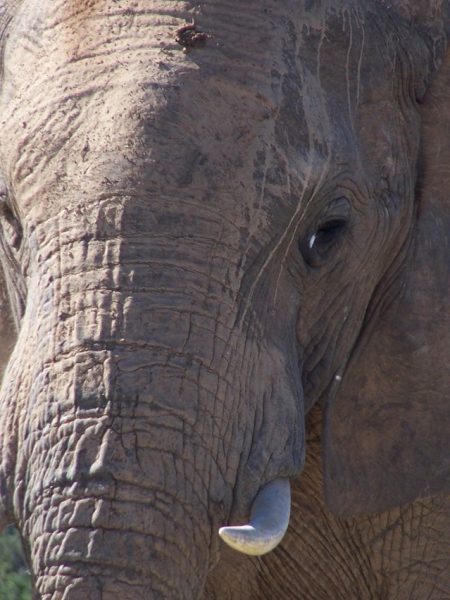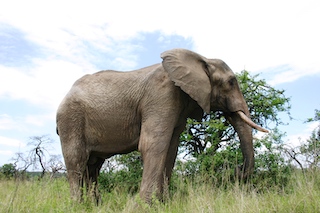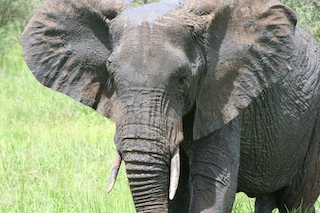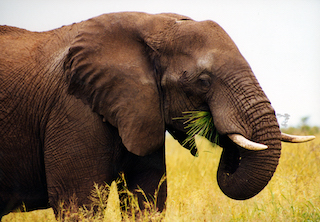Travel To Kenya To Get To Know The Elephants
African subspecies
There are two subspecies of elephants in Africa. They are the larger savannah elephants and the smaller forest elephants. The savannah elephants live in the equatorial forests. The smaller forest elephants are darker than the savannah elephants and live in smaller groups. Both the savannah and forest elephants eat leaves, branches and bark of trees and bushes as well as fruits and grasses.
Familial structure
Female elephants become fertile between the age of 25 and 45, whereas male elephants can hit puberty at the age of 20. Male elephants leave their group at puberty to live alone but occasionally form fluid alliances and small groups with their counterparts. The gestation period of an elephant is 22 months. Usually young elephants wean between 6 to 18 months, but some calves continue nursing for over many years. While nursing, several family units form a herd of up to 70 members composed of related females and their calves. Each unit contains about ten individuals.
Scent sense
Elephants tend to hear or smell things first and then train their sight, instead of using vision as their primary sensory input. They keep track of their family members and non-family members using just their sense of smell. Psychologist Richard Byrne and researchers at Saint Andrews University in Scotland did a study in 2007 in Kenya at Amboseli national park to test the ability of elephants to distinguish between friends and foes using scent. They kept urine samples in front of some female elephants, regardless of when they last saw each other, and checked them out. According to Scientific American, the elephants acted up when they smelt one that didn’t come from their herd. Studies have concluded that by using its sense of smell alone, elephants can track and distinguish between the scents of up to 30 companions and relatives, even if separated for years. Such memory helps them monitor their groups with whom they socialize, move and forage together. The trait also aids them to stay together and avoid getting lost while traveling in their herds. Anatomically, the olfactory region of the elephant’s brains is particularly active and extremely developed compared to its other senses. The mechanism works this way. When two elephants approach, they automatically emit something called the contact appeal. If they recognize the appeal, they respond in a friendly manner. If not, they adopt a defensive position.
Teeth
Elephants have six sets of teeth in their lifetime. They do not erupt at once. At birth, it has two or three pairs of teeth in each jaw. New ones develop from behind and move forward as worn teeth fall out. Each new set is heavier, longer and wider. The last teeth can measure 40cm long and weigh up to 5kg. Only the remains of the last four molars are present after 60 years of age. Tooth loss brings on starvation and sometimes can be the cause of death.
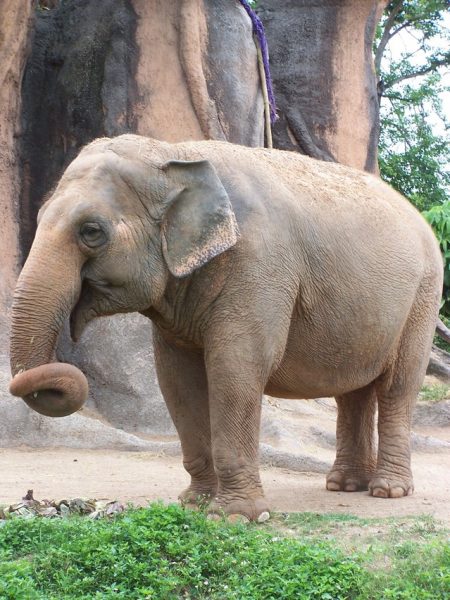
Travel to Kenya to get to know the elephants
Trunk
Trunk is unique to members of Proboscidea, which includes the extinct mammoths and mastodons. The trunk weighs around 130kg and is capable of lifting about 250kg. It is also extremely dexterous, sensitive and mobile, which makes it appear independent from the rest of the body. Anatomically, elephant trunk is a combination of the nose and upper lip. The nostrils are at the tip. The trunk comprises of 16 muscles. The most significant muscle, which covers the top and the sides, raises the trunk. Another muscle covers the bottom. Inside the trunk is a complex network of transverse and radiating muscle fascicles that supports the elephant with its movement. The trunk is innervated by two nerves, which render it sensitive. The bifurcations of these nerves reach most portions of the trunk.
Functions
Elephant uses its trunk for various purposes. It is used for communication as well as for handling food and other objects. The end of the trunk has flap-like projections enabling it to perform such delicate functions as cracking a peanut open, picking up a coin from a surface that is flat as well as putting a kernel in the mouth and blowing away the shell. They gather objects in a manner similar to how human beings use their thumb and index finger. Elephants use the trunk in other ways as well. They involve holding branches as well as scratching themselves in places that the tail cannot reach. It is also used to collect grass or dust for spraying onto themselves as well as for protection against sun and insect bites. When elephants meet, they will intertwine trunks, or one may touch the other’s face. The trunk-shake is like a human handshake. It may be associated with functions such as greeting or assurance or as a way of estimating strength. If danger is near, elephants swivel the trunk, possibly sniffing the air.
Eating and drinking
For a long time, field researchers have observed a particular tool-making behaviour of elephants. With its trunk and tusks they strip and mould bark from trees and chew it to make a giant ball. Then they use it to plug a waterhole previously dug and covers it with sand. When they need water, they uncover the sand, unplug the hole and drink the water from the hole by sucking through the trunk and squirting it into the mouth. While eating, they detach fruits, leaves and grasses and place them into the mouth. Per day, an elephant can consume up to 100 kg of food and 100 liters of water or even more.
Mysterious phenomenon
Apart from the usual functions performed by the trunk of the elephants, there is another role that it plays. People have observed for centuries that in times when there is hardly any water nearby or on hot days, elephants put their trunks in the mouth to retrieve liquid and spray themselves with it. But the source of this water has been a mystery. Two credible sources of the water are the pharyngeal pouch and the stomach. Scientists have detected small food particles in the sprayed water and such content are only found in the pharyngeal pouch and not in the stomach. The contents of the stomach are digested food, and that would irritate the skin because they are acidic. Moreover, elephants are seen doing the spraying even while walking and running. It would be difficult to suck water from the stomach and do the spraying while walking or running. Therefore, the most likely source of the water is the pharyngeal pouch and not the stomach. Studies about this mysterious phenomenon of elephants using the trunk to retrieve water from its body are inconclusive. Observations and research about it are still underway.
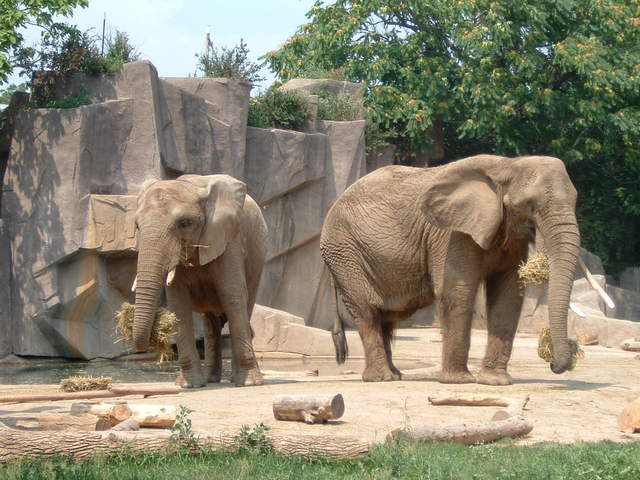
Travel to Kenya to get to know the elephants
Communication
People are always amazed at the astonishing interaction styles of elephants. The communication skills of elephants are as sophisticated as that of cetaceans and apes. They use contact calls for social reasons and specifically to keep in touch with each other. Female elephants are particularly able to distinguish between the contact calls of different relative members as well as non-related individuals outside the family. They can remember such calls from around 14 families in the population. Elephants also use body language appropriately in conjunction with their various communication styles. For example, they flutter their ears in a particular manner when emitting infrasound. The fluttering is rapid when they greet each other and gentle when they chat.
Vocalization
Elephants produce sounds by modifying the nostril size as air is passed through. These means of communication include grumbles, lows, snores or groans, each having different signification. Quiet sounds are the roar, rolling growl and snort. High sounds are the trump, trumpet phrase, pulsated trumpet, gruff cry and bark. Rumbling sounds from intestines are similar to cats purring. They can also create other sounds by beating the trunk against their tusks, tree or even on hard ground.
Origin of sounds
Elephants produce subsonic rumbles and infrasound vocalizations that are emitted at frequencies that cannot be heard by human beings. But other elephants that are even 20km away can hear and respond to these low-frequency calls. Experiments indicate that elephants detect the infrasonic sounds as seismic waves. These vocalizations originate from larynx as well as from a structure associated with it called the pharyngeal pouch. In other mammals, there are nine bones in the throat connected in a boxlike configuration known as the hyoid structure, which supports the voice box and the tongue. But the hyoid fabric of elephants has only five bones. Muscles, ligaments and tendons fill the gap between these five bones. These attachments allow the larynx a degree of freedom enabling the pharyngeal pouch to form just behind the tongue. This is the structure that facilitates sound production. The muscles of this structure function as a resonating chamber for sounds. The advantage of these less than 16Hz infrasound is that the sound waves can travel through the ground and air circumventing many obstacles such as trees and bushes without being shattered. So, they can propagate on longer distances without being detected by human beings. But not all emitted sounds are infrasound. They also produce sounds that can be heard by humans.
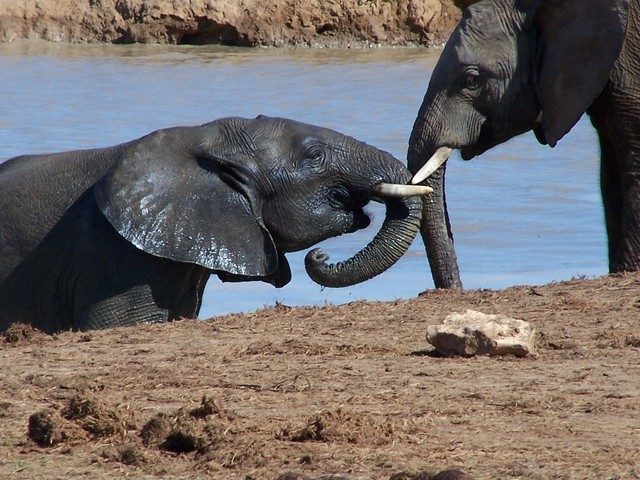
Travel to Kenya to get to know the elephants
Intelligence
Science and field research have proven that elephants are one among very few intelligent animals on earth. They are as smart as chimpanzees and dolphins. Advanced studies and close examinations have long established, without reservation and with enough empirical evidence, the superior intellectual nature of the big brains of elephants. Out of all terrestrial mammals and the most intelligent organisms in the universe, the brain of an elephant is extraordinarily the biggest. It is even huger and denser than that of an average human being although both have the same structure and complexity. The brain of an average elephant weighs at 11 pounds. In comparison, the brains of bottlenose dolphins and humans weigh about 3 pounds. Given its relative size, elephants may be capable of more complexity than is understood or documented. This suggestion that elephants may have higher intelligence than is recorded based on its brain size is interesting as it opens up the field for much more research for cognitive neuroscientists.
Displays of intelligence
Mimicking sounds is an indication of the elephant’s astonishing intelligence. They can play and mimic sounds they hear in the nature or of other beings. They have been simulating the sounds of their trainer and passing trucks. Often, the elephant articulates certain sounds to bear a strong resemblance to the word spoken. However, a true manifestation of their intelligence is its ability to self-medicate. A pregnant mother due to give birth will chew on the leaves of Boraginaceae tree to induce labour. Another faculty that indicates the elephant’s superior intellect is its playfulness including games such as throwing sticks, passing an object or squirting water from its trunk. Elephants in zoos have been seen stealing caps from onlookers and hiding them in a teasing manner. When they use their trunks, elephants demonstrate an uncanny ability to learn new facts and accomplish tasks using various tools and implements. Also, in captivity, they have been found to show interest in art. A behaviour that has amazed people across the world is when it holds a brush with its trunk to draw and paint abstract art. A noticeable facet of the elephant’s intelligence is its problem-solving abilities. For example, they use a stick to scratch when its trunk cannot reach its back. They also drop rocks on electric fences to ruin them.
Cognitive abilities
Part of the reason elephant possesses such commendable behaviour is their huge brain structure because larger brains are more cognitively complex. Large-sized brain possesses highly developed cerebral cortex and hippocampus, which are responsible for cognitive processing abilities such as problem solving and willpower as well as the ability to empathize with others and mourn the death of loved ones. While one can’t determine the efficiency of the brain or how it works based on its size alone, it offers a decent approximation and hints to the cognitive power. Thus this highly smart animal is naturally the perfect focus and target for cognition reasoning experiments, considering its complex cranium structure, highly sophisticated neural circuitry and large temporal lobe.
Decision-making faculties
Nature has not bestowed survival instincts upon elephants. In other words they are not born with the fundamental existence predispositions but rather learn them during their infancy, childhood and adolescence. Thankfully, elephants possess the greatest amount of cerebral cortex of all land animals. Their convoluted neocortex compensates for the lack of innate survival instincts. They also enable the elephants to have greater learning and knowledge retention capabilities as well as help them to make everyday decisions. These thick cortices comprise of many neurons, which is an index of superior intelligence. Contextually, its brain has as many cortical neurons as that of a human being and has larger pyramidal neurons than humans. In fact, this suggests that elephants might have learning skills superior to people. Von Economo neurons, involved in the ability to make quick decisions and social awareness, was thought to exist only in great apes, humans and four species of dolphin. However, these neurons have been discovered in elephant brains as well.
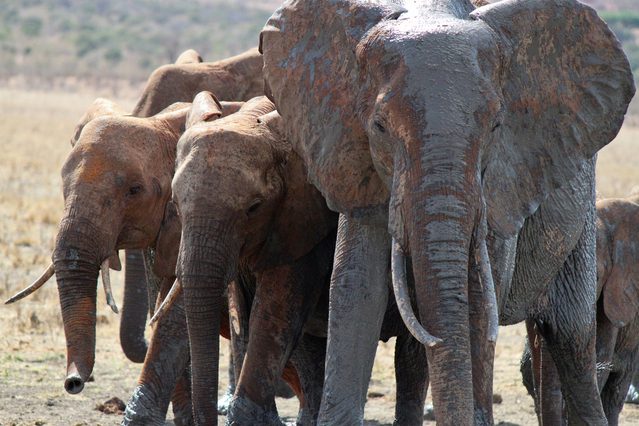
Travel to Kenya to get to know the elephants
Data recalling capabilities
That portion of the cerebral cortex responsible for communication, language, planning, spatial orientation and working memory is called temporal lobe. Elephants have the largest temporal lobe relative to the size of its body among any land mammals. The temporal lobes of the elephant are even more superior to that of humans. The elephants use their temporal lobe to encode survival and identification details, imprinting the data to their memory to be retrieved later. The lessons learned include understanding their place in the social hierarchy, how to eat and how to use tools. Its brain is specially devised to accomplish learning, long-term memory and social awareness. It is due to these qualities that elephants have flashbacks and is the reason that they experience PTSD. The temporal lobes also have more foldings implying that they can store more information than other animals.
Encephalization quotient
It is rather difficult to determine precisely the smartness of elephants by measuring its brainpower and intelligence. Hence scientists use encephalization quotient or EQ, which is defined as the total brain mass compared to total body mass. It measures its brain size against the size scientists determine it would be, based on the body weight. In other words, it compares the actual brain size against the projected brain size, based on its body weight. The smaller the ratio of body mass to brain mass, the dumber the animal is and higher the ratio, the smarter it is. Elephant has an encephalization quotient of 1.88. To compare, humans typically have an EQ of 7, chimpanzees an EQ of 2.5 and pigs usually score the lowest around 0.27. Female elephants that are leaders of herds have greater EQs than their male counterparts because of the matriarchal social structure of the herds.
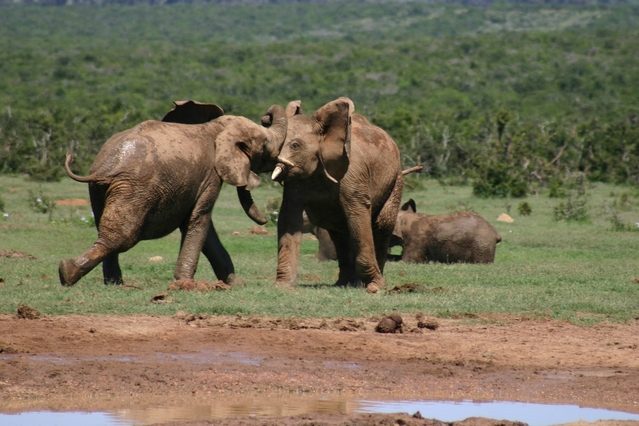
Travel to Kenya to get to know the elephants
Human-like behaviour
There has been an eternal quest to understand elephant’s mysterious human-like mental faculty such as discernment, thought and insight. Some researchers believe that the intelligence level of elephant rivals that of human beings. As a mark of their high intellect, they demonstrate a gamut of emotions including joy, grief, altruism, compassion and self-awareness.
Empathy
In the wild, most elephants live in herds or clans that can only be separated by capture or death. Separation from one another, including transfer between different zoos, is a traumatizing event for them. During such trying moments, just like humans, elephants have proven to show great ability to empathize with the misfortune of others. The emotions of the elephant are particularly note-worthy when they console each other in times of trouble.
Mourning
The pachyderm’s empathy reaches its height when they mourn their dead. Only humans have the capacity to have feelings for the death of their loved ones. Elephants display grief and are filled with emotions when they encounter or touch the bones of other elephants that have died. They show signs of their grief by gently caressing the corpses with their trunks and touching them with their feet. An elephant’s remarkable memories allow them to remember their close relatives from the past. So, when they encounter elephant tusks, bones or carcass of a deceased relative, they investigate and identify them immediately, suggesting a long-term memory. In an experiment, when scientists presented an array of objects, the elephants reacted most to the tusks and bones once belonging to a deceased relative. Fascinatingly, just like human beings do, elephants perform proper burial rites for their dead loved ones. Passing herds pay respect to the dead bodies of those elephants that are reduced to a skeleton. Field researchers and biologists have seen elephants visiting the bones of long dead relatives even in far off places.
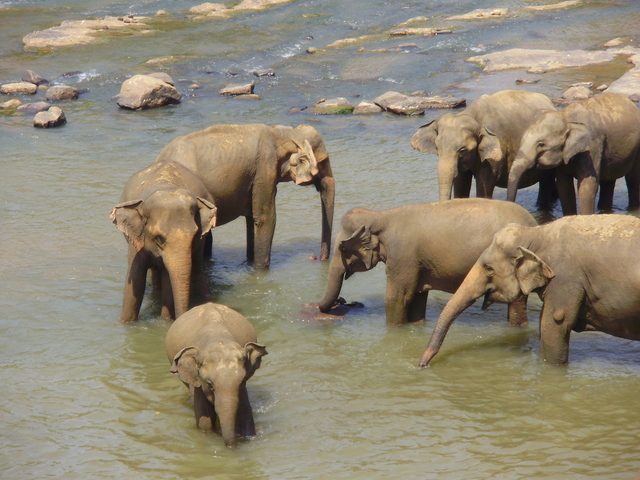 Memory
Memory
Elephants are known for their sharp memory power. The extraordinary recalling power of elephants both in the wild and in captivity has been fodder for many fascinating stories, both fiction and non-fiction. Ancient legend has it that elephants never forget. That may be bit of an exaggeration and a myth concocted by oldwives for many generations. It seems more likely that they forget. Although the theory is a myth, it doesn’t stray too far from the truth. There is surely some truth in it because science, studies and research have proven beyond the shadow of a doubt that elephants do possess incredibly and exceptionally long memory power for certain things with the ability to keep information for many decades.
Peer recognition
Elephants recognize each other better than human beings do. The face and smell of family members and peers are the most important things that it remembers. The pachyderm can easily distinguish their members, companions and other creatures that have left a powerful impression on them. These giants can keep a recollection record of many different individuals all at the same time. There are countless stories of the beautiful giants who still remember each other when united, after being separated for years.
Jenny and Shirley
The largest natural-habitat elephant sanctuary based in Hohenwald, Tennessee in the U.S is developed specifically for endangered elephants. In 1999, when a new Asian elephant named Shirley came to the elephant sanctuary, the resident elephant named Jenny became anxious, excited and animated. She could not contain herself. After they had been given some time together, they both displayed enthusiastic greetings towards each other. Shirley also started becoming aroused. She exhibited unusual mothering behaviour towards Jenny. And the two elephants began trumpeting. The founder of the sanctuary, Carol Buckley, explained that she had never seen anything that intense from elephants unless it was aggression. So, Buckley and the workers at the sanctuary did a little digging about their past records. After looking into their backgrounds, they found out that before coming to the elephant sanctuary, the elephants were old friends and had previously known each other. Jenny and Shirley had briefly crossed paths 23 years earlier when they performed together with the same circus, Carson & Barnes for a few months. Shirley was 30 years old, and Jenny was only a calf. The founder said that it was an emotional reunion between seemingly old friends. They were able to reunite and rekindle their friendship 23 years later.
Recognizing human beings
The recognition skills of elephant are not only limited to their herd members but also with human beings whom they had met or come into contact with even decades earlier including those who have trained them at a young age, even if they haven’t been around for a long time. They have revealed altruism by their willingness to support and help people in distress. They remember kind gestures as well as injuries done to them. Those who work in close collaboration with the pachyderms have noticed elephants hold grudges against those who hurt them. One study of elephants in the Amboseli national park in Kenya showed that they would react negatively to the sight or smell of clothing that resembled closely to that worn by Maasai tribesmen because they often threw spears at elephants. Thus, the animals remember and associate the smell of the tribe with spearing.
Iain Douglas-Hamilton
The zoologist and founder of Save the Elephants, Iain Douglas-Hamilton, is an authority on pachyderms. He has studied them in Nairobi and Tanzania in the 1960s. Early in his career, he recounts becoming so acquainted with an elephant in Lake Manyara national park in Tanzania that he could walk beside her in the savannahs. He left in 1969, and when he returned in 1973, the elephant still remembered him.
Further studies
The ability of elephants to recall their peers and human beings from the past serves them well in their long lives. The amount of time spent together does not have any bearing whatsoever on their recollection capability. Not only are they able to recognize peers and people, but also express emotions in ways that only human beings can. They can pinpoint familiar peers using their incredible sense of smell and detect contact appeal emitted by them while meeting. But it is yet to be confirmed whether they use the same faculty and mechanism to recognize humans. Further studies in the future might shed some light on it.
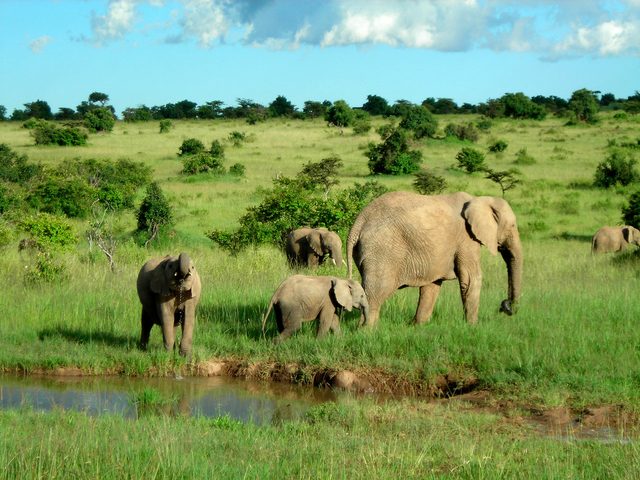 Matriarch elephants
Matriarch elephants
The multi-generational families of elephants in the wild can typically contain up to 10 members that move together as one unit searching for food, defending each other and caring for their offspring. This extended family structure is called herd with the oldest female elephant called matriarch. She leads the pack and controls the daily activities of its members. The matriarch elephant in the herd is also the most experienced family member. The wealth of experience of the matriarch is due to her photographic memory and the ability to retain superior memories for several decades. These sharp memories sometimes even last a whole lifetime. In critical moments, the entire group relies on her experience. The members of the herd just have to look at the mother elephant in times of trouble or danger or even in an emergency crisis as she will remember what to do and where to go.
Conflict avoidance behaviour
Proof of the remarkable lasting memories lies in the possessive behaviour of the matriarch elephant. Studies have found that she alerts the rest of the herd when confronted by everyday dangerous situations or when sensing the presence of predators nearby. Matriarchs will huddle in protective posture when met with an unfamiliar elephant because they recall that those strange elephants usually conflicted with the security of the herd. One study by Dr. Karen McComb, an animal behaviourist, and her colleagues at the University of Sussex in England showed that when faced with a stranger elephant, older female elephants were more likely to crouch in a defensive position than younger female elephants. This difference in the conflict avoidance behaviour is because the older ones were more likely to have experienced a stranger who conflicted with the herd before. In other words, the older matriarchs were aware that outsiders could start conflicts and possibly harm the calves. Such remembrance helps in survival because they now know what needs to be done to defend them and warn the stranger.
Threat mitigating behaviour
The superb memory of elephants helps them recollect threats and tackle many dangerous situations. When 39 families of elephants in Amboseli national park in Kenya involved in a study heard 72 playbacks of the sound of a lion roaring in loudspeakers for more than two years, the older matriarchs listened intently to the roars for longer periods. They then led the herd members into safety because they sensed the threat more intuitively than others. Older females are capable of holding a store of social knowledge. Over a period, these female elephants build up a great memory cache that enables them to remember predators, enemies and friends. Therefore, aged elephants are capable of making critical survival decisions. This skill is because of their experience in meeting similar peril before.
Ecological memory
Elephants are known to have incredible ecological memory and can travel to far off places in search of water and food. The memories they possess of water holes and feeding spots along the migration routes previously taken are remarkable. They remember the sites of important places where they have found water and food in the past over hundreds of miles of terrain. Such remarkable memories about long-forgotten feeding ground locations are among its survival tactics. The matriarch elephant even leads and directs the team if an old feeding site is recognized as she can recall important locations, even if she had not visited those places for many years. She can remember many remote water sites, which are even several thousands of kilometers apart. Sometimes she uses tracks, which have not been used for several years, highlighting the mental mapping memory of the matriarch. She depends on the long-term memory of their previous travel on those routes.
Remembering droughts
Studies have shown that matriarch elephants that have once experienced droughts will lead their groups to more fertile land. Younger matriarch elephants that haven’t yet lived through a dry spell are more likely to remain behind. During a particularly severe drought in 1999 at the Tarangire national park in Tanzania, researchers and scientists from Wildlife conservation society in New York City studied three herds of elephants. When the resources dried up, two herds left the park. Each of those groups had matriarchs between the age group of 38 and 45. In other words, the pachyderm groups with older matriarchs left the parched park in search of food and water. But the one group that stayed put had a younger matriarch elephant of 33 years of age. As a result, there was an 18% increase in the mortality rate among the calves that remained behind. Of the sixteen young elephants that died during the dry spell, ten were from the group that stayed put. Researchers found out that there had been another drought in the area in 1958 that lasted for three years, meaning that older matriarchs would have been around five years old at the time. They likely remembered the event and how their herds survived it by migrating to lusher areas. They had a better knowledge of where to go when the natural water and food resources dried up. Hence, during the second drought, they headed on the familiar path, which seems to demonstrate high cognitive thinking. The younger matriarch in the third group wasn’t aged enough to remember it and didn’t know where to go. If she had survived a drought in childhood, she would have had a good grasp of the danger of drought.
Memory processing
The memory power of elephants is due in large part to the enormous size of its brains. But, although they are large-brained animals, their brain doesn’t store each detail of every stimulus encountered. Instead, the memory encodes what’s essential for survival, such as family identification and resource location. In the same way that certain moments impact the lives of human beings, the content of functional memories of elephants are preserved for future retrieval.
Memory leads to long life
In the wild, the outstanding recalling power of an elephant is thought to be part of how they survive and is the key to its survival. The utilitarian memories of the elephant help them retain essential survival information. Thus, by using experiences stored in its brain, an elephant can remain alive longer than others. And, memories can stretch over decades, helping them in their relatively long lifespan survival. They have a long life both in the wild as well as in captivity. They typically live up to the ripe age of 80, which is also an average human being’s lifespan. So, memory, experience and age complete the vicious circle. Great memory leads to rich experiences and better survival chances, which in turn leads to old age and long life.
Longevity leads to leadership
The ability of the oldest matriarchs to avoid conflict, mitigate threats and find sustenance highlights the advantage of longevity and the importance of age in leadership in large-brained mammals. Animals with large brains compared to their body size can more effectively adjust their defensive responses to specific encounters and are thus better at evading predators. That is why clans with old members have a high survival rate.
Adverse effect
The remarkable memory of elephants has an adverse effect. Sadly, older and larger elephants are a hunter’s targets, making them vulnerable to poaching. Poachers target her for ivory tusks, as they are the largest in the herd. Furthermore, when an older elephant gets killed, the data in the memory bank dies with it, and that leaves the herd at a disadvantage because they relied on the older elephant to find food and water locations. Hence, death of the matriarch of the herd is a tragic loss for the group. Moreover, if crops have replaced those feeding locations, then that paves the way to human-elephant conflict too.
 Mirror recognition test
Mirror recognition test
Scientists have long considered the ability to recognize one’s reflection in a mirror as an index of high cognitive ability. It is the greatest sign of the animal’s intelligence and one that only a few of the intelligent species such as humans, apes and highly social animals can claim. Elephants are also among the exclusive group of animals that recognize its reflection in a mirror. This ability shows self-awareness, which is an indication of the animal’s capacity for intellect and thinking. To pass the test, the elephant has to respond in clear ways that it sees itself as opposed to believing it sees another animal. In this mirror examination, the experimenter applies a sticker or a mark on the body of the study subject. Then they place a mirror in front of the elephant and nudge it gently to look at its reflection. If after seeing its image the elephant looks for the sticker or the mark on its body then it passes the mirror test.
More studies needed
Elephants are such awe-inspiring creatures that some people even believe that elephants possess consciousness. With further future analyses, it may be able to ascertain the veracity of its conscious possession. Consciousness is closely related to intelligence. And its intelligence has been proven using the mirror test. Besides, there are many more captivating things about elephants that have not been discovered as yet. For that, it is essential to cross the insurmountable difficulties and experimental hurdles faced by researching biologists and scientists when experimenting with elephants. But most of the experiments were done using zoo elephants and not with those that live in their natural habitat. Studies involving zoo elephants only recorded a sample data size of one. Conducting more advanced cognitive experiments in their natural surroundings with rich data sets poses elephantine challenges. Hence, they do comparative cognition studies using pigeons, dogs, pigs, primates, mice, fruit flies and zebra fish as research animals. These animals are easy to experiment on in a controlled environment and to run repeat trials for robust data sets. With elephants, it becomes much harder to manage numerous tests. However, they have made progress in gauging the animal’s visual, olfactory and vocal discrimination. Some have even pioneered work in the areas of hearing, self-awareness and sensitivity to vibrations. But one thing is for sure. The more we know about this adorable pachyderm, the more we realize that there is more to it than meets the eye.
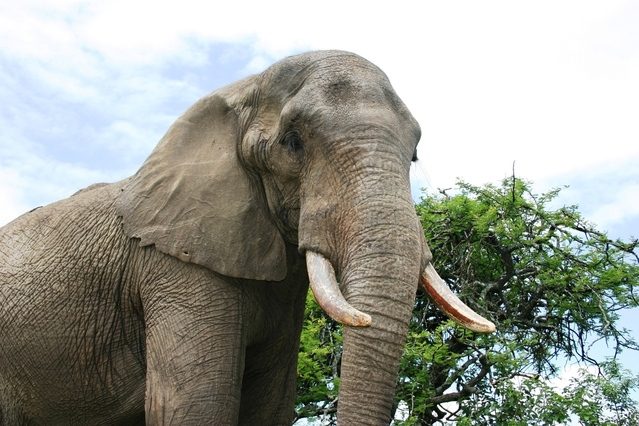 Tusks
Tusks
Tusks of savannah and forest elephants are slightly different in appearance. The savannah elephant’s tusks curve outwards, and the forest elephant’s tusks are straight pointing downwards. In between the two tusks is the trunk of the elephant. The trunk and the two tusks are the most prominent and distinct facial parts of the elephant. They occur in both females and males. The female ones are thin, small and often of the same thickness. However, in Asia, only some male elephants have tusks. The female Asian elephants do not have tusks but have tiny horns called tushes. Perhaps the elephants in Africa have a greater need for digging for sustenance.
Constitution of tusks
Elephant tusks are elongated enlarged and modified large incisors and are no different from other teeth. They grow throughout its lifetime and are used for marking, digging and feeling as well as in fights. Tusks can grow up to eight inches a year. One of the largest ones found weighed about 200 pounds and was around 10 feet long.
Invisible tusk part
The tusk of an elephant that is below the surface forms the base, which is a pulp cavity embedded deep in the giant’s skull. It constitutes about one-third of the tooth and is made up of tissue, nerves and blood, like the roots of the teeth of a human being.
Visible tusk part
Two-thirds of the tusk is visible outside the skin and is made up of dense dentine with a calcified rind called cementum and a layer of enamel. Ivory is soft enough to be carved. When one views elephant ivory in cross-sections, it reveals diamond-shaped crisscross lines.
Right or left
Evidence suggests that elephants have a preference for one tusk over the other. In humans, it is similar to being right or left-handed. The preferred one, called the master tusk, is the one mostly used for their primary jobs. The dominant tusk will be shorter as well as rounder at the tip.
Blessings of tusks
An elephant’s tusks are a blessing to them because they give a sense of majesty that makes them seem to rise above other animals, not to mention the various uses for which it is put to use. Principally, they are used to aid foraging, moving things out of the way, stripping bark from trees to eat, digging, lifting objects and gathering food. Elephants also use them for offense, defense and as weapons against potential predators or in battle with other elephants. Most importantly, tusks protect the trunk, which is tucked between the two tusks when the elephant charges. In fact, researchers use tusks to track and identify elephants because no two of them are alike. Tusks can reveal the age of an elephant relative to their peers of the same species and sex.
Curses of tusks
Poachers target elephants for their tusks. Therefore, tusks are also a curse to elephants. Man’s greed for ivory has led to the slaughter of thousands of elephants. Poachers use high-powered automatic rifles, darts and poison to take elephants down. While the elephants are dying, they gouge out the tusks from the elephant’s skull. The animals die an agonizing and slow death from haemorrhage.
Big tusk gene
Tusks are teeth, and if broken, it stays broken. That is why sometimes it is possible to see an elephant in the wild with only one tusk. But if the root is not damaged or injured, it can continue growing from there. Tusk shape and size are inherited. But, the average size of the tusks has decreased over the past century because ivory hunting has resulted in the decimation of its gene. Today, most of the oldest elephants with the largest tusks have been poached and killed for their huge tusks. Hence, their genes are no longer inherited. Now large sized ivory is becoming increasingly rare. Therefore, poachers are going after the younger males and females, which spells disaster for breeding elephants.
Tusker
They are named tusker because of their impressive, long, huge and cumbersome tusks, which weigh over 100lbs and almost scrape the ground. The giant tusker elephant is rare and highly endangered because it is potentially an attractive target for traders, who attack them for ivory. There are only around 25 tuskers left in the world out of which 15 are in Kenya. But the two oldest members of the 15 tuskers in Kenya named Satao and his successor Satao II faced a terrible death, which was a huge loss for Kenya. The country lost two of its iconic giant tuskers.
First tusker killed by poachers
The first iconic giant tusker was killed by poachers in May of 2014, which sent shockwaves around the world. It was a great loss for Kenya. The poachers killed the giant tusker for his tusks. He suffered a gruesome end. When rangers found his body, the face was hacked off and so badly mutilated that they had difficulty identifying him. As a consequence, conservationists at Kenya wildlife service petitioned Uhuru Kenyatta, the Kenyan President, to provide armed protection for the remaining tuskers. Armed guards would serve to deter poachers from killing the remaining giants. There is a precedent for this petition. Uhuru’s father, Jomo, who was the first President of Kenya, placed a tusker elephant named Ahmed with massive ivory under his protection by presidential decree.
Second tusker killed by poachers
The second iconic giant tusker was slain by poachers in January 2017, in southern Kenya, less than three years after his predecessor. The authorities found the body immediately but only revealed it two months later. The exact cause of death of Satao II is not yet confirmed but it is suspected that it was struck with a poisoned arrow in a poaching incident in Tsavo east national park. The conservation group, Tsavo Trust were able to find the dead body by a river near the eastern border during a routine aerial surveillance of the park. The area is a hotspot for poaching. The authorities discovered the body before the poachers stripped the tusks and hence the animal’s enormous tusks were intact. One tusk weighed 50.5 kg and the other 51.5kg. It was the largest of the remaining giant tuskers in Kenya. The elephant was 50 years old and was a beloved by visitors to the park where he roamed. The Tsavo wildlife conservation team followed the two poachers, allegedly responsible for the death, deep into the park and arrested them two weeks after the elephant’s carcass was found. They also recovered 12 poisoned arrows, three bows and an AK-47 rifle.
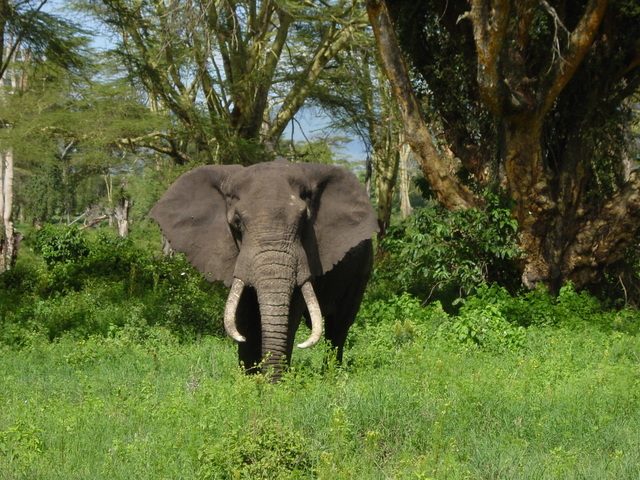 Poaching for ivory
Poaching for ivory
The endangered and vulnerable elephant in Kenya is poached and slaughtered every year for their ivory. Poaching for ivory is happening at a faster rate than they can produce and is the biggest threat to elephants. Tusks are sold for thousands of dollars in the black market, making it a lucrative trade. The ivory is also used as trophies or carved into jewellery, ornaments and trinkets. Sometimes, they also sell elephant skin and meat.
Old and new
It is hard to make out the age of new ivory. And antique ivory is pricier than new ones. For these reasons, new ivory is fraudulently sold to unassuming people after artificially aging it and forging the documents. The more expensive the ivory is, the more the people will buy new ivory as a profitable investment. Thus, a market is created for new ivory as well. The truth is that any ivory market, whether old or new, creates a demand for tusks, leading to the extinction of elephants.
Protection and maintenance
China is currently the largest market for ivory where it is coveted as a status symbol or for traditional medicine. China is closely followed by U.S. that continues to allow inhumane hunters to trade ivory and elephant heads as trophies. The CITES banned ivory trade in 1989, putting hunting outside the law. However, despite the ban, demand persisted. Hence elephants were still poached in huge numbers, which has led to steep declines in their numbers. Ivory poaching has been much severe in African countries than anywhere else. The number of African elephants was reduced by more than half within a span of ten years from 1979, partly as a result of demand for ivory products. Since then, authorities have confiscated tusks every year. But in 1997, the ivory trade ban was lifted, and Botswana, Zimbabwe and Namibia were allowed to sell stocks of ivory to Japan from government warehouses. South Africa joined the three African nations in 2000 in the sale of limited ivory from existing stocks. In 2014, import and export of elephant ivory was banned again.
Impractical poaching solutions
Many poaching solutions such as dyeing or scarring the tusks have been proposed. For dyeing, they would have to infuse the watering holes with dye. Placing chemicals in the water risks poisoning not only the elephants but also other animals that use the same water source. Moreover, the scars of the ivory could cause infection. Hence, both the solutions are impractical.
Alternate to ivory
Synthetic celluloid ivory of the same standards as real ivory is available in the market. In China, its price is 20% less. A tree called Tagua produces nuts that are sculpted like ivory to make such things as jewellery and umbrella handles. It is an inexpensive and renewable alternative.
Kenya takes the lead
The factors that compound elephant-poaching problem are unmonitored ivory markets, weak law enforcement, insufficient resources and corruption. However, Kenya’s investment in anti-poaching, which includes punishment and prosecution have seen the country manage to increase elephant population between 2007 and 2014, whereas Africa as a continent saw a 30% decline. On the global front, Kenya’s experience and historical knowledge about elephants place it in a leading position in its effort to save these animals from extinction. The country is also home to the longest running elephant studies. The dwindling elephant numbers in African countries will not stop until countries like Japan, Thailand and China continue to have a market for ivory. A renewed enthusiastic effort to deal with elephant poaching is required for that to happen.
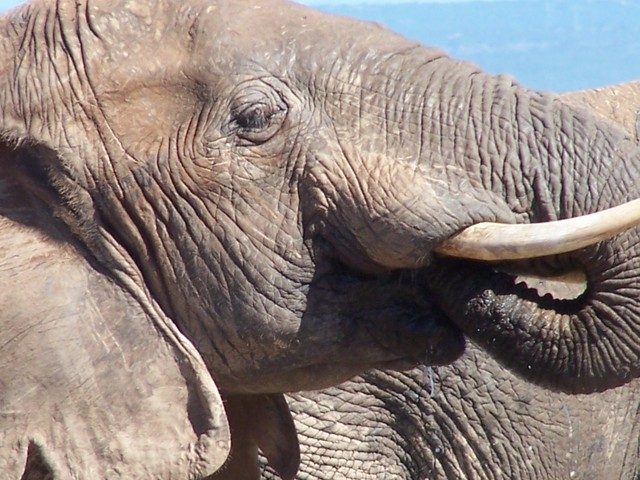 Conflicts with humans
Conflicts with humans
Human beings will need to intensify food production by 70% by the year 2050 to meet the growing population demand. As human population expands, more land goes for agriculture. So, the habitat of elephant is shrinking and becoming fragmented. With human population growing across their range, degradation and habitat loss will remain major threats to the survival of elephants. As a result, elephants raid the fields and damage their crops, which affects the livelihood of farmers. In retaliation, humans slaughter elephants. This occurrence can be messy for both elephants and people. Hence, researchers are working to mitigate human-elephant conflict using the latest methods in forestry and sustainable agriculture.
Elephant collaring
One of the ways to avoid human-elephant skirmish is by being aware of their movements. Elephant collaring enables conservationists and researchers to monitor elephant movements and chart landscape and habitat connectivity within the landscape. It allows practitioners to see if an elephant is stationary, sick, injured or actively moving. The information also helps predict locations where farms and elephants may come into future conflict. The collaring technology is vital for security and management, enabling scouts and rangers to respond quickly to poaching and human-elephant conflicts. So, Narok county council and Kenya wildlife service partnered with WWF to collar elephants in Maasai Mara reserve with GPS to track them as they move around the reserve.
GPS technicalities
Fixing GPS collar to an elephant is a difficult task. First, the animals have to be immobilized using anaesthesia, which has to be carefully handled. This is because human beings are sensitive to it since the skin absorbs it rapidly. A syringe loaded with anaesthesia is attached to a dart and a charge within. Upon shooting the dart from a capture gun, it impacts the animal and the inner charge fires as well, thereby injecting the anaesthesia into the elephant. The anaesthesia and the dart only immobilize the elephant but do not harm it. Since the drug takes about fifteen minutes to act, they follow the tracks of the darted elephant. On tracking the animal, the team sets up the GPS and puts it around its neck and secures it. One of the members takes tusk measurements, another sprinkle it, and another heals elephant wounds. Sticks are used to keep the elephant’s trunk open, allowing it to breathe under sedation. When the team completes the collaring, a team member calls for everyone to clear. At that time, another member injects the reversing anaesthesia into the elephant’s ear vein. The revived elephant quickly jumps up and sprints away. The level of technical knowledge and skills of the team is incredible. Some members have two decades of experience catching elephants for GPS collaring.
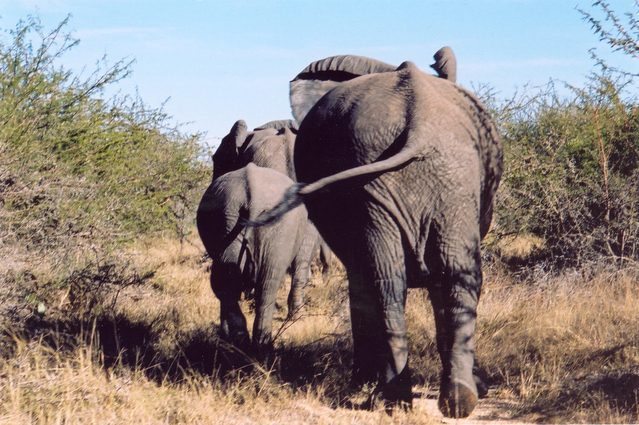 Legacy
Legacy
Once upon a time, elephants roamed across most of Africa from the Mediterranean coast to the south. But now they are only found in a much smaller range. Forest elephant occurs only in the equatorial rainforest of Western and Central Africa. And savannah elephant occurs in southern and eastern Africa, with the highest densities in Botswana, Zimbabwe, Tanzania, Kenya, South Africa and Zambia. The elephants in Kenya have lost over half of their range since 1979. There has also been massive poaching for trophies and ivory over the decades. A combination of loss of range and poaching has led to a significant drop in their population. A substantial elephant population in Kenya occurs in well-protected areas, but less than 20% of the habitat is under formal protection, half of which comprises Tsavo conservation area. The Tsavo Trust officers in collaboration with Kenya wildlife services monitor and patrol the area daily through ground and aerial reconnaissance and collect information about the elephants. They are particularly possessive of the tuskers in this area.
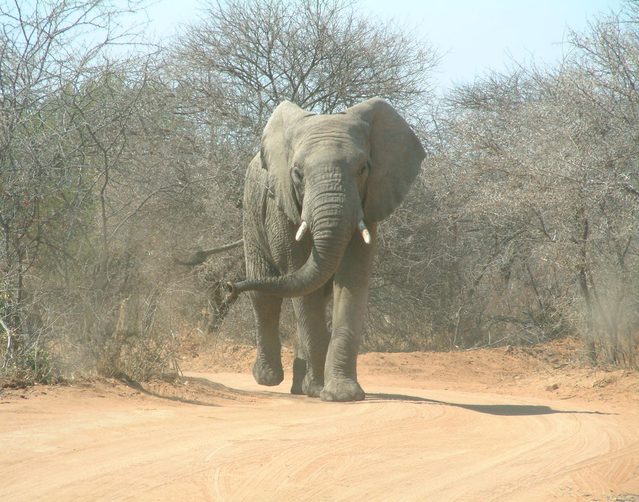 Major David Sheldrick
Major David Sheldrick
Major David Sheldrick was the senior warden and one of the pioneers of Tsavo east national park during the sixties. During his wardenship, all heavy machinery, every vehicle and each borehole was in perfect working order within the park. Spare parts filled all stores and staff uniforms lasted for five years. During his tenure, David Sheldrick also ensured that Tsavo east was fully developed with tourist streets, administrative roads and anti-poaching tracks. David’s passion for the wilderness led him to undertake in-depth research delving into all early records of the Tsavo area to comprehend the changes taking place in the habitat under his control. By studying the root systems of trees and grasses, David understood the effect they had on a changing water table. Hence, David knew about Tsavo and its rhythms of life more than anyone. While doing his field studies, he faced challenges when some scientists came calling for the culling of elephants. Major David Sheldrick vehemently opposed it because he could see the problems this would create due to the prevailing circumstances at that time – people with ulterior motives. He also complained that it was hard to maintain standards at East Tsavo with the paltry sum that had been earmarked by the new government.
Elephants in Tsavo national park
Tsavo east national park occupies half of the Tsavo region where elephants occur. David Sheldrick was the first person to understand the human nature of elephants. He hand-reared and ultimately rehabilitated orphaned elephants. Besides, he also marked and monitored the elephants to map their ranges. The population numbers of elephants in the Tsavo region were 35,000 in the 1960s. But in the 1970s it was reduced to 20,000 with a further decimation occurring in the next three decades to a mere 6,000. The four population crashes that to a large extent led to the decimation were the adverse climatic conditions i.e. drought followed by flood, the poisoning of elephants by tribes people, the changes in habitat within the national park and the in-house slaughter of elephants.
Adverse climatic conditions
The 1st crash was the drought in the 1970s when within just one year 10,000 elephants, mainly females, elderly, weak, maimed, sick and sub-adults, died of malnutrition. Lack of vegetation and little rainfall weakened females and young ones. Independent bulls were able to travel in search of foliage, and thus their mortality was lower. Then came the onset of rains that made the elephants disperse although there was no indication of large-scale migrations.
Poisoning by tribes people
The 2nd crash was the illegal killing of elephant for its thick and massive tusks by the Waliangulu tribe. The tribe resided just beyond Giriama County in the park’s eastern boundary, and its culture entwined with elephants. Tribespeople hunted them using bows to fire poisoned arrows. They purchased the poison from traditional Giriama poison makers, who boiled up the roots and bark from a particular type of Acokanthera trees. The poison was so deadly that there was no known antidote for it. The bulls who survived the first crash were the primary victims. When the remaining males became difficult to find, the females were targeted and then the entire families.
Changes in habitat
The 3rd population crash was the human population pressures beyond the park boundaries, which deprived the elephants of much of their habitat. The wooded scrubland was gradually transforming into grassland that was not beneficial to these large browsers. Such changes in the habitat within Tsavo east national park affected these animals. Thus, human-conflict diminished the elephant population further and put it into long-term decline.
Three decades of in-house slaughter
The 4th population crash happened when the government of Kenya suddenly abolished the board of trustees overnight in 1976 and seized control. They amalgamated the National game department with the National parks service, two organizations that had different roles. The National game department had been responsible for monitoring wildlife in settlement areas, and the National parks service conserved wildlife in protected areas. The merger proved disastrous because there was an in-house slaughter of elephant for ivory for three decades by the wardens and rangers themselves, perpetrated by Somalis armed with automatic rifles.
Untimely death
As part of the management reshuffle instigated by Kenya government, David Sheldrick was moved from Tsavo to Nairobi to lead the planning unit of the wildlife organization. During his tenure in Nairobi, he founded the Sheldrick Elephant Orphanage. However, David never lived to fulfill his task of overseeing the development of the country’s national reserves. On the 13th of June 1977, six months later, he died of a heart attack. Dame Daphne Sheldrick, his widow, was given permission to live in Nairobi national park to continue her work with the elephant orphans, who were coming into the orphanage fast and thick due to the factors that initially led to the elephant population crash. She is a wildlife rehabilitator, conservationist and founder of Sheldrick wildlife trust in Kenya.
Kenya wildlife service
Many years after David’s death, the infamous and corrupt Kenya wildlife service organization was reformed and in 1990, Dr. Richard Leakey came in as its director. It was he who brought the poaching of elephants in the protected areas under control and that restored Kenya’s credibility. Soon after, World Bank, notorious for its unwieldy bureaucracy, provided funding for a headquarters, which was an impressive veneer to the organization. The Kenya government also allocated impressive sums to the Wildlife service. But critics would soon point out the inefficient usage of government money.
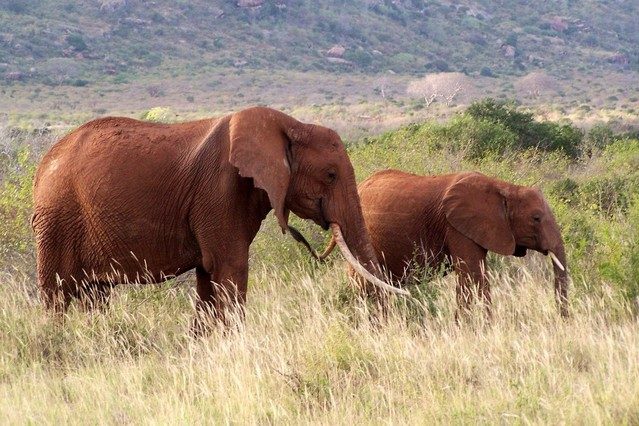 Department constraints
Department constraints
The management and running of National parks department has always been a concern to the stakeholders and well-wishers of wildlife. During Richard Leakey’s reign, the major complaint was the inefficient usage of money allocated. History repeats itself – either there is not enough money or it is spent inefficiently. Changes at the department can only happen if it has people who have conservation of wilderness as their primary motive. Anything short of that is bound to be disastrous and undermines the relentless effort put in by the likes of David Sheldrick. As the country’s heritage and a major contributor to the economy, Kenya should start taking wildlife conservation and its maintenance seriously.
Ecosystem engineers
Barring the messy affairs of the beautiful elephants, they can be very beneficial to the ecology as they play the role of ecosystem engineers, meaning they create and maintain savannah and forest ecosystems for other species. They are also good for tourism in Kenya, which is the primary economy of the country. Therefore, investing in their conservation is a smart economic policy. But it can be an uphill battle to convince local communities and people to buy into this idea.
To receive a colourful digibook about elephant with videos, images and text, please fill out the following form or simply email us on safaris@safari-center.com

